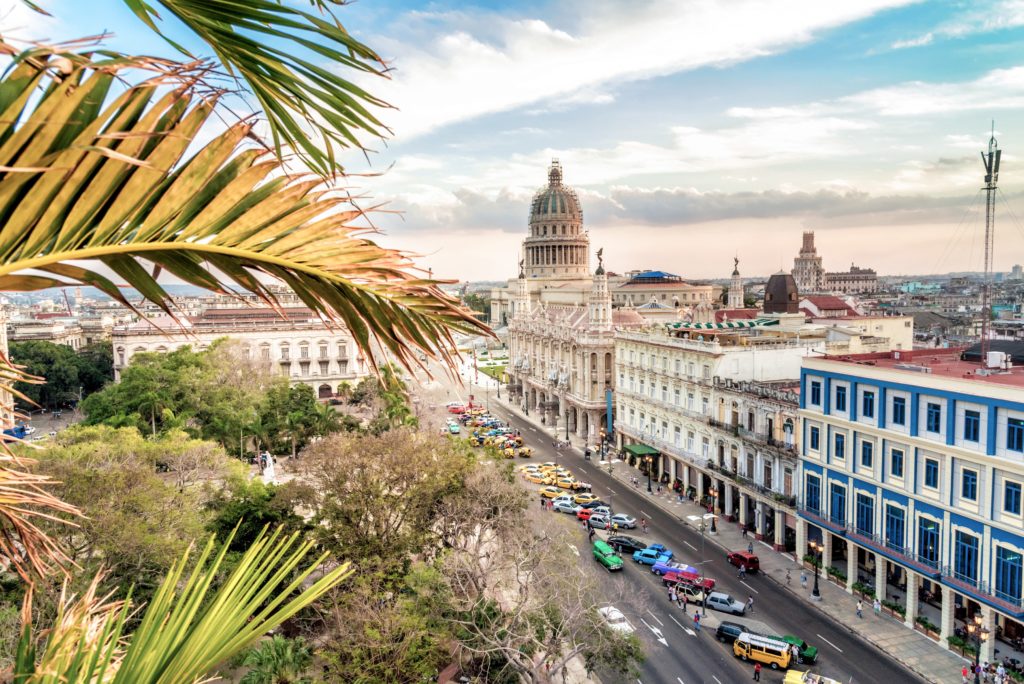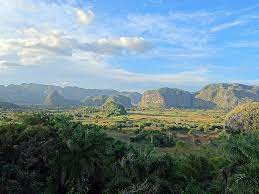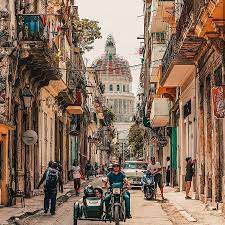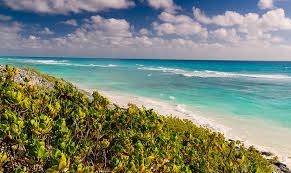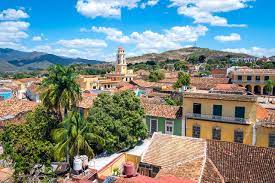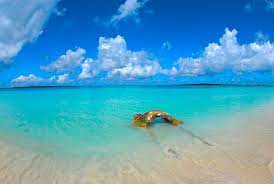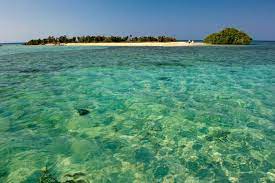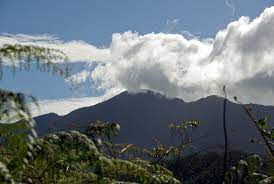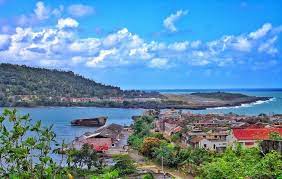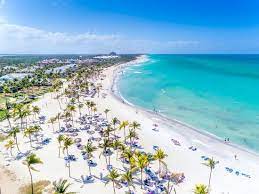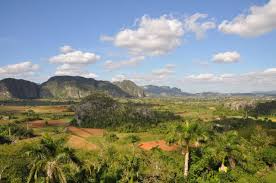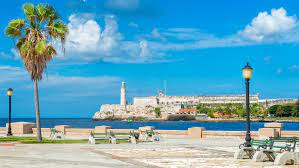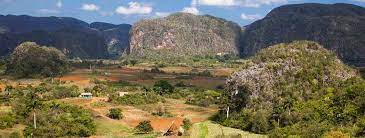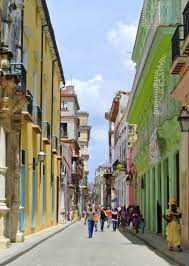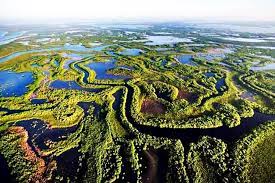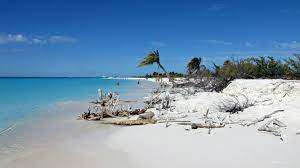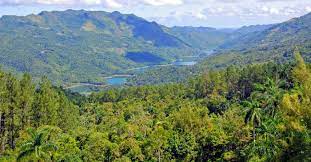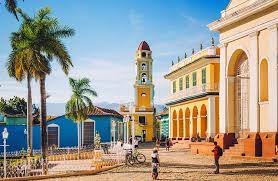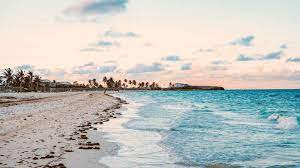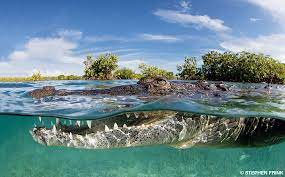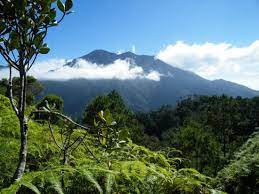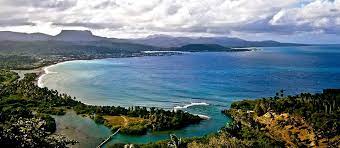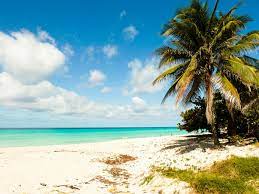CUBA: LOS PAISAJES MÁS BELLOS DE NUESTRO PAIS. UN RECORRIDO NACIONAL. PHOTOS
Si bien es cierto que hacer una lista con los paisajes más bellos de Cuba es verdaderamente difícil por la variedad y cantidad de escenarios, también es posible señalar los que han resultado más atractivos a los ojos tanto de nacionales como extranjeros.
Cuba tiene muchas maravillas, pero es bueno considerar que aparecen en el paisaje de este archipiélago 14 Parques Nacionales, seis Reservas de la Biosfera, seis Sitios Ramsar, dos Sitios Patrimonio Mundial Natural, y 28 Áreas Importantes para la Conservación de las Aves (IBAs).
Por tanto, la lista la ordenaremos desde el punto de vista geográfico, de oeste a este y no en cuanto a la preponderancia como paisaje.
PINAR DEL RÍO
Pinar del Río constituye toda una región mágica. Se trata de un área donde el verde resalta por encima de cualquier otro color.
Para los cubanos, además de la provincia más occidental de la Isla, simboliza la patria del mejor tabaco del mundo, donde se cosechan las hojas para la capa de los puros Habanos, una labor de expertos agricultores de esa verdadera joya natural.
Un primer punto de escala bien podría ser Cayo Levisa, ubicado a 27 kilómetros de La Palma, en el norte de Pinar del Río. Para llegar a ese lugar distante a tres millas náuticas de tierra firme se debe partir del embarcadero de Palma Rubia.
Una vez llegado a Cayo Levisa se encuentran cuatro kilómetros de playas vírgenes, de fina arena blanca, bañadas por el mar Caribe.
LA HABANA VIEJA
Fundada definitivamente en 1519 a la sombra de una frondosa Ceiba, La Habana o La Villa de San Cristóbal de La Habana, como realmente es su nombre se fundó un 16 de noviembre a orillas del Puerto Carenas, luego de que en 1515 tuviera un asentamiento inicial en la costa sur del país.
Abarca completamente 732 kilómetros cuadrados y posee 15 municipios de los cuales nueve son totalmente urbanos, de ellos 4,5 kilómetros cuadrados corresponden a la parte antigua conocida como La Habana Vieja, la más interesante, 2,5 kilómetros cuadrados son los más visitados.
LA CIÉNAGA DE ZAPATA
Uno de los viajes más sorprendes a Cuba está relacionado con la Ciénaga de Zapata, importante humedal, con un gran registro de flora y fauna, se trata de uno de los lugares más interesantes de Cuba, en la región suroccidental de la ínsula, con un panorama excepcional de varios tipos de ecosistemas de pantano.
CAYO LARGO DEL SUR
Cayo Largo del Sur fue en su momento un rincón apartado de Cuba. Dotado de un colorido particular, esta ubicado en la porción sudoccidental cubana, tiene historia, magia y un futuro.
ESCAMBRAY
Lo conforma el macizo montañoso de Guamuhaya y resulta un sitio verdaderamente maravilloso, con un clima particularmente fresco en medio del calor siempre latente de Cuba.
Las montañas de Guamuhaya, también denominadas Escambray, están localizadas hacia el sur de la región central de Cuba y muestran un vigoroso relieve, sólo superado por el de la Sierra Maestra en el oriente del país.
TRINIDAD DE CUBA
Es una ciudad verdaderamente interesante, sobre todo para quienes quieren conocer sitios vinculados a la cultura cubana, pues es uno de los lugares donde mejor se conserva la arquitectura colonial.
La parte vieja de la villa impresiona por sus calles cubiertas de piedras de rio, capaces de recrear la mirada con añejamientos y permitir a la imaginación trasladarse en el tiempo, como en un viaje al pasado.
El 23 de diciembre de 1413, en su trasiego hacia la Bahía de Jagua, llego el Adelantado Diego Velázquez de Cuellar a la futura villa de la Santísima Trinidad. Luego escuchó, junto a 20 de sus hombres, la primera misa del lugar oficiada por Fray Juan de Tesín, su capellán.
JARDINES DEL REY
La naturaleza cubana tiene lugares verdaderamente maravillosos y protegidos, una verdadera fiesta para los sentidos. Incluye a un sitio paradisíaco de la geografía cubana como Cayo Coco.
JARDINES DE LA REINA
Uno de los lugares ideales en la región sur del oriente cubano, en particular en las provincias de Ciego de Ávila y Camagüey, con escenarios marinos excelentes.
Se trata de El Parque Nacional Jardines de la Reina, el mayor de la ínsula en cuanto a extensión de mar, con dos mil 170 kilómetros cuadrados. Está integrado por el archipiélago del mismo nombre y las aguas que lo rodean.
PICO TURQUINO
La región oriental cubana tiene muchos encantos. Desde el punto de vista urbano, se encuentra la ciudad de Santiago de Cuba, que en su momento fue capital de la Isla; pero el mayor atractivo está en su paisaje natural.
El Pico Turquino es el punto más alto de Cuba con mil 974 metros sobre el nivel de mar. Está ubicado en el centro de la Sierra Maestra, la mayor cordillera de la nación.
BARACOA
Perteneciente a la provincia de Guantánamo, Baracoa, se asienta junto al mar y destaca por sus bellezas naturales. Conocida como la Ciudad Primada de Cuba por ser la primera villa establecida por los conquistadores españoles en la isla, Baracoa es toda magia de colores y aventuras. Se le reconoce como un sitio imprescindible, una fiesta de colores.
Nuestra Señora de la Asunción de Baracoa es su nombre, con construcciones urbanas abarcadoras de un pequeño espacio rodeado de mucha costa abrupta, follaje, montañas y ríos.
Los indios taínos (descendientes de los arruacas o arauacos) eran los pobladores por excelencia del lugar cuando el almirante Cristóbal Colón llegó en 1492 y en el mismo viaje del descubrimiento, al pisar por segunda ocasión la isla, lo hiciera en esa área.
VARADERO
Se trata de la playa más hermosa de la isla, que destaca en listas internacionales en cuanto a la modalidad de Sol y Playa.
Varadero constituye el polo de visita nacional e internacional mas importantes de Cuba.
Distante unos 140 kilómetros hacia el este de La Habana, la capital del país siempre aparece como un lugar privilegiado por sus aguas transparentes y arena blanca muy fina.
CUBA: THE MOST BEAUTIFUL LANDSCAPES OF OUR COUNTRY. A NATIONAL JOURNEY. PHOTOS
Although it is true that making a list of the most beautiful landscapes in Cuba is truly difficult due to the variety and quantity of scenarios, it is also possible to point out those that have been most attractive in the eyes of both nationals and foreigners.
Cuba has many wonders, but it is good to consider that 14 National Parks, six Biosphere Reserves, six Ramsar Sites, two World Natural Heritage Sites, and 28 Important Bird Conservation Areas (IBAs) appear in the landscape of this archipelago.
Therefore, we will order the list from the geographical point of view, from west to east, and not in terms of preponderance as landscape.
PINAR DEL RIO
Pinar del Río constitutes a whole magical region. It is an area where green stands out above any other color.
For Cubans, in addition to the westernmost province of the island, it symbolizes the homeland of the best tobacco in the world, where the leaves are harvested for the layer of Habanos cigars, a work of expert farmers of this true natural jewel.
A first stopover point could well be Cayo Levisa, located 27 kilometers from La Palma, in the north of Pinar del Río. To get to that distant place three nautical miles from the mainland, you must start from the Palma Rubia pier.
Once you arrive at Cayo Levisa, you will find four kilometers of virgin beaches, with fine white sand, bathed by the Caribbean Sea.
LA HABANA VIEJA
Definitively founded in 1519 in the shadow of a lush Ceiba, Havana or La Villa de San Cristóbal de La Habana, as its name really is, it was founded on November 16 on the shores of Puerto Carenas, after it had an initial settlement in 1515. on the southern coast of the country.
It completely covers 732 square kilometers and has 15 municipalities of which nine are totally urban, of which 4.5 square kilometers correspond to the old part known as Old Havana, the most interesting, 2.5 square kilometers are the most visited.
THE CIENAGA OF ZAPATA
One of the most surprising trips to Cuba is related to the Cienaga de Zapata, an important wetland, with a great record of flora and fauna, it is one of the most interesting places in Cuba, in the southwestern region of the island, with an exceptional panorama of various types of swamp ecosystems.
CAYO LARGO DEL SUR
Cayo Largo del Sur was once a secluded corner of Cuba. Endowed with a particular color, it is located in the southwestern part of Cuba, it has history, magic, and a future.
ESCAMBRAY
It is made up of the mountainous massif of Guamuhaya and it is a truly wonderful place, with a particularly cool climate in the midst of the always latent heat of Cuba.
The Guamuhaya mountains, also known as Escambray, are located towards the south of the central region of Cuba and show a vigorous relief, only surpassed by that of the Sierra Maestra in the east of the country.
TRINIDAD DE CUBA
It is a truly interesting city, especially for those who want to know places linked to Cuban culture, as it is one of the places where colonial architecture is best preserved.
The old part of the town impresses with its streets covered with river stones, capable of recreating the look with aging and allowing the imagination to travel back in time, as in a trip to the past.
On December 23, 1413, in his journey to the Bay of Jagua, the Adelantado Diego Velázquez de Cuellar arrived at the future town of the Holy Trinity. He then listened, together with 20 of his men, to the first mass of the place officiated by Fray Juan de Tesín, his chaplain.
JARDINES DEL REY
Cuban nature has truly wonderful and protected places, a true feast for the senses. It includes a paradisiacal site of Cuban geography such as Cayo Coco.
JARDINES DE LA REINA
One of the ideal places in the southern region of eastern Cuba, particularly in the provinces of Ciego de Ávila and Camagüey, with excellent marine settings.
It is the Jardines de la Reina National Park, the largest on the island in terms of sea area, with 2,170 square kilometers. It is made up of the archipelago of the same name and the waters that surround it.
PICO TURQUINO
The eastern region of Cuba has many charms. From the urban point of view, there is the city of Santiago de Cuba, which at the time was the capital of the Island; but the greatest attraction is in its natural landscape.
Pico Turquino is the highest point in Cuba with 1,974 meters above sea level. It is located in the center of the Sierra Maestra, the largest mountain range in the nation.
BARACOA
Belonging to the province of Guantánamo, Baracoa, it sits next to the sea and stands out for its natural beauties. Known as the First City of Cuba for being the first town established by the Spanish conquerors on the island, Baracoa is all magic of colors and adventures. It is recognized as an essential site, a festival of colors.
Nuestra Señora de la Asunción de Baracoa is its name, with urban constructions encompassing a small space surrounded by a lot of rugged coastlines, foliage, mountains, and rivers.
The Taino Indians (descendants of the Arruacas or Arauacos) were the quintessential settlers of the place when Admiral Christopher Columbus arrived in 1492 and on the same voyage of discovery when he set foot on the island for the second time, he did so in that area.
VARADERO
It is the most beautiful beach on the island, which stands out in international lists in terms of Sun and Beach.
Varadero constitutes the most important national and international visiting pole in Cuba.
Distant about 140 kilometers to the east of Havana, the capital of the country always appears as a privileged place for its transparent waters and very fine white sand.
Agencies/ Radio Bayamo/ Extractos/ Excerpts/ Internet Photos/ Arnoldo Varonaa/ www.TheCubanHistory.com
THE CUBAN HISTORY, HOLLYWOOD.



 CUBA: Los Paisajes más Bellos de Nuestro Pais. Un Recorrido Nacional. PHOTOS. * CUBA: The Most Beautiful Landscapes of Our Country. A National Journey. PHOTOS.
CUBA: Los Paisajes más Bellos de Nuestro Pais. Un Recorrido Nacional. PHOTOS. * CUBA: The Most Beautiful Landscapes of Our Country. A National Journey. PHOTOS.